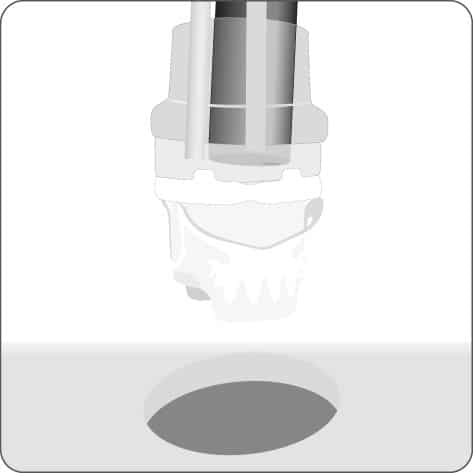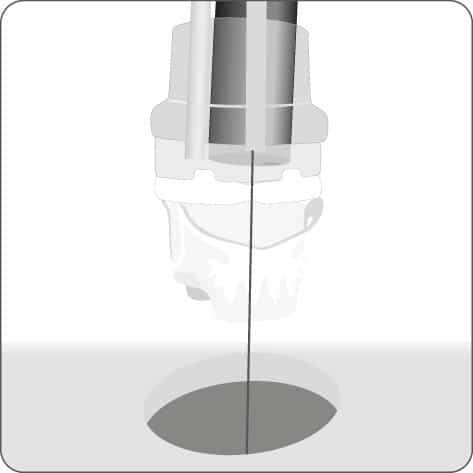
Lumen reduction for bariatric endoscopy
+49 (0) 7071 96528 160
service@ovesco.com

+49 (0) 7071 96528 160
service@ovesco.com
BARS® is an endoscopic treatment of weight regain or dumping syndrome after a gastric bypass.
The BARS® consists of an application cap with mounted clip and thread, thread retriever and BARS® hand wheel. The BARS® application cap is mounted on the tip of the endoscope while the application aids are guided along the outside of the endoscope in working channels. By turning the hand wheel, the thread is tensioned and the clip is released.
During clip application, the balloon that is inserted into the anastomosis prevents the lumen from closing completely and defi nes the remaining lumen.
The BARS® Set is supplied as a complete treatment unit and comprises the following products:
Before purchasing and using the BARS®, participation in a training course is mandatory.
| Cap length | 35.3 mm |
| Clip width = compression width [a] | 12.4 mm |
| Min. outer diameter [b] | 19.5 mm |
| Max. outer diameter [c] | 21.2 mm |
| Cap inner diameter [d] | 13.1 mm |
| Compatible endoscope diameter [e] | 10.0–12.0 mm |
| Inner BARS working channel [A] | 3.0 mm working channel diameter | Max. 2.8 mm instrument diameter |
| Endoscope working channel [B] | min. 3.7 mm |
| Outer BARS working channel [C] | 2.8 mm working channel diameter | 2.6 mm instrument diameter |
| Guide wire | 3700 mm length | 0.76 mm (0.03‘‘) diameter |
| Reference number | 100.60 |
Preparing the target tissue
Preparing the target tissue using EMR or mucosal
incision offers significant benefits.
Positioning
Correct positioning of the BARS® Anchors is crucial to the success of the treatment.
2Source: Prof. A. Schmidt, Universitätsklinikum Freiburg, Germany

Target the application site.

Insert the guide wire into the outer BARS® working channel and place it in the anastomosis.

Insert the anchors into the endoscope working channel and the inner
BARS® working channel.

Crossed placement of the anchors in the prepared target tissue.
1Source: Dr. med. M. Kandler, Städtisches Klinikum Dresden, Germany
